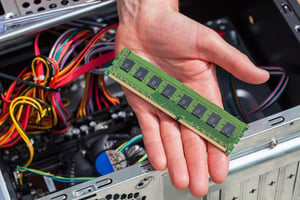With component sizes shrinking and board complexity rising, maintaining a quality standard is challenging. Luckily, the systems responsible for identifying quality defects have also undergone technological advancements. As a contract manufacturer, we have to identify trends early and adopt the technologies that create value for us and ultimately, our customers. Here are some of our quality and testing processes that we implement that help deliver great results for customers.
Electrical and Mechanical Inspections during SMT component placement
VR’s SMT machines perform electrical and mechanical verification on the parts it places before soldering occurs. This is an important step because components frequently appear similar or are so small that manually identifying markings is not feasible. We rely on SMT verifications to confirm the right components are placed. During the programming of the machine, both electrical and mechanical tolerances are set for each component. As the components are placed, the machine runs a test, checking mechanical and electrical tolerances for each component. Any failure alerts the machine operator to make a correction.
Relying on SMT machines to place the correct components saves time and prevents rework that would need to take place if components were improperly placed.
X-Ray Inspection
High resolution x-ray inspection is an important technology that is utilized in the PCBA quality process. Since components are growing increasingly smaller as surface mount technology replaces thru-hole mounting, it is difficult to rely on older methods of inspection. This is especially the case when solder connections cannot be visually inspected.
X-ray inspection is utilized for the following instances:
- Verify component integrity – by using the x-ray, it is possible to detect counterfeit components. The circuits inside questionable components can be compared to a working component in order to examine integrity
- BGA reflow inspection – when looking through a component, it is possible to view if there is insufficient solder
- ESD damage detection – x-ray imaging can detect if there is a break in the circuit
Automated Optical Inspection
AOI machines have experienced many technological advancements within the past 5 years. Camera resolutions, 3D imaging, and machine learning have created new technologies and ways to inspect components. We’ve recently upgraded our AOI machines to the new MIRTEC CoaxPress. This allows us to capture more complex inspection details and move product through the facility faster.
Previous technology did a great job of looking down on components, examining boards in a 2D model. With new cameras and machine learning, we can now look at boards and create a 3D environment to capture better images related to solder joints, voids, component markings, and tilt. With more images at a higher resolution, AOI machines are now capable of “learning” and identifying problems early on.
Test
Oftentimes, customers request that we provide functional tests for their printed circuit board assemblies. Customers need to provide the test parameters and equipment, or they can consult with us to build the necessary testing procedures. However, some equipment such as multimeters, power supplies, and oscilloscopes are available at our facility.
Here is a listing of some of the testing VR conducts:
- Functional Te
 st – this test determines if the PCBA’s hardware is free of defects that would prevent it from functioning properly. There are various forms of functional test which range from simply verifying that the PCB works correctly to running it through a range of operational tests.
st – this test determines if the PCBA’s hardware is free of defects that would prevent it from functioning properly. There are various forms of functional test which range from simply verifying that the PCB works correctly to running it through a range of operational tests. - Power On/Off – this is a simple test where the PCB is placed in either a customer supplied fixture or power is applied manually in an attempt to power on the device. If the device is successfully powered on, an LED light will indicate that the board has passed the test. This can also be referred to as Go/No Go testing.
- Hi-pot – this test is used to ensure that the user of the final electronic product will be protected from electric shock. To accomplish this, high voltage current is passed through the insulation and is monitored by the hi-pot tester. If the voltage does not cause the product’s insulation to break down, it is considered safe. This test is usually completed before a final test, but in some cases, hi-pot testing is completed after a preliminary test and before the final test.
